- Home
- slideshows
- miscellaneous
- We drove a $34,000 Hyundai Tucson to see if it's a legitimate rival for Honda, Toyota, and Subaru. Here's the verdict.
We drove a $34,000 Hyundai Tucson to see if it's a legitimate rival for Honda, Toyota, and Subaru. Here's the verdict.
The original Hyundai Tucson debuted back in 2005. That first generation model lasted until 2009...

... when it was replaced by a second generation for the 2010 model year.
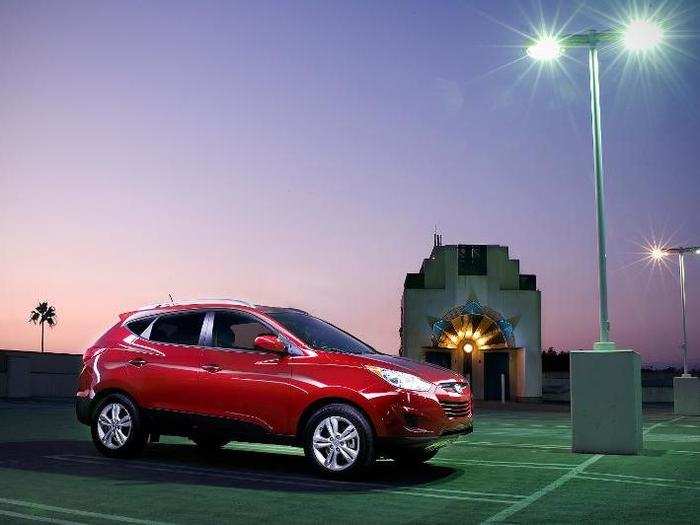
The current third-generation Tucson debuted for the 2016 model year.
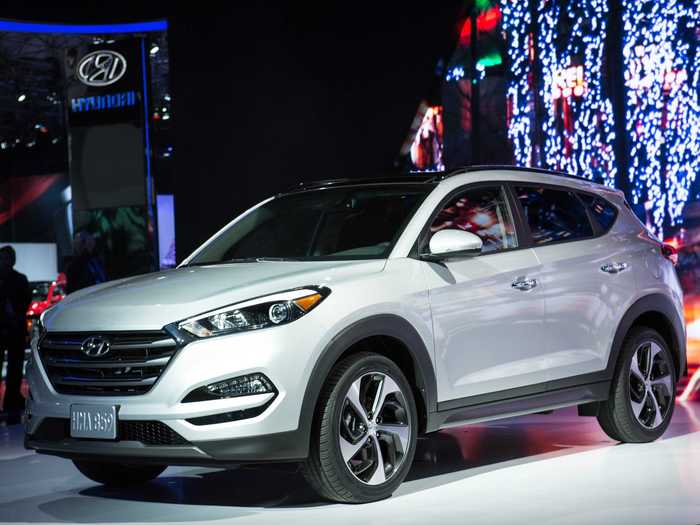
In 2019, the Tucson received a mid-life refresh.
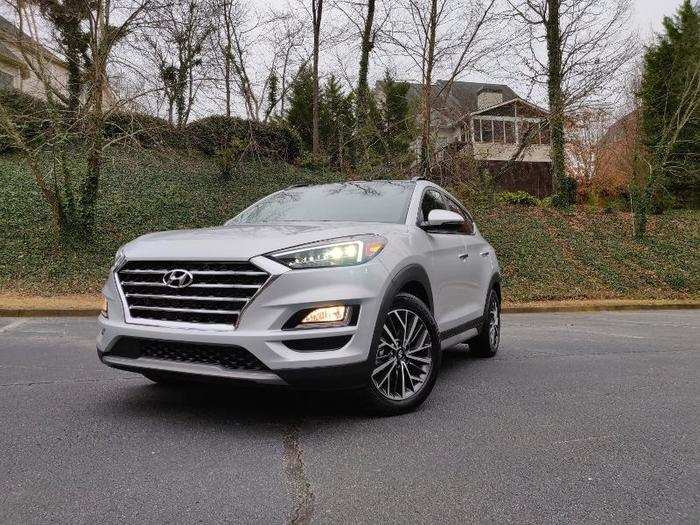
In Hyundai's lineup, the Tucson slots in above the subcompact Kona and ...
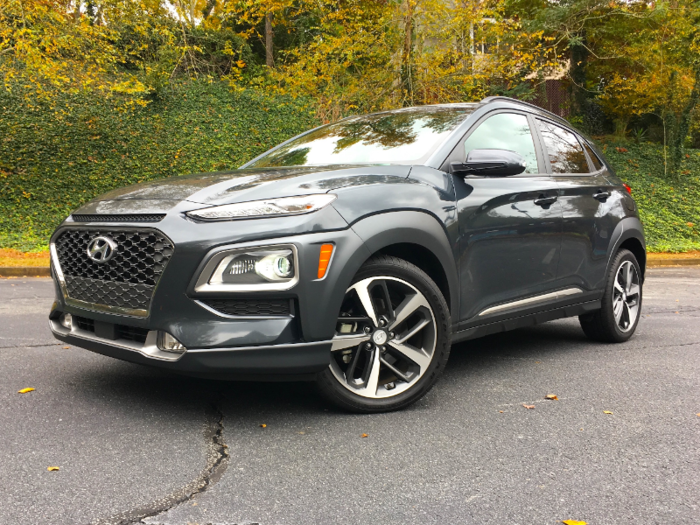
... the midsize Santa Fe.
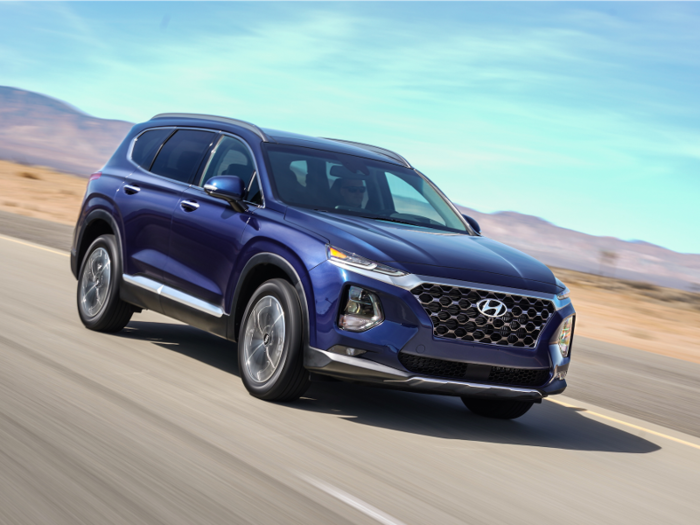
Up front, the Tucson has an updated front grille and ...
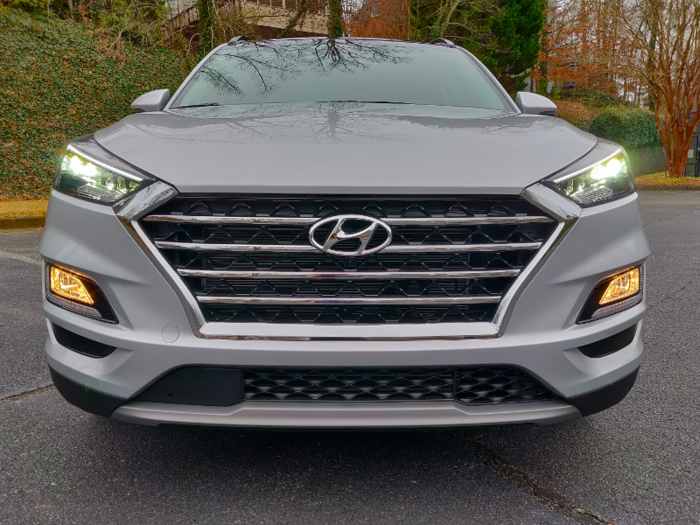
... LED headlights.
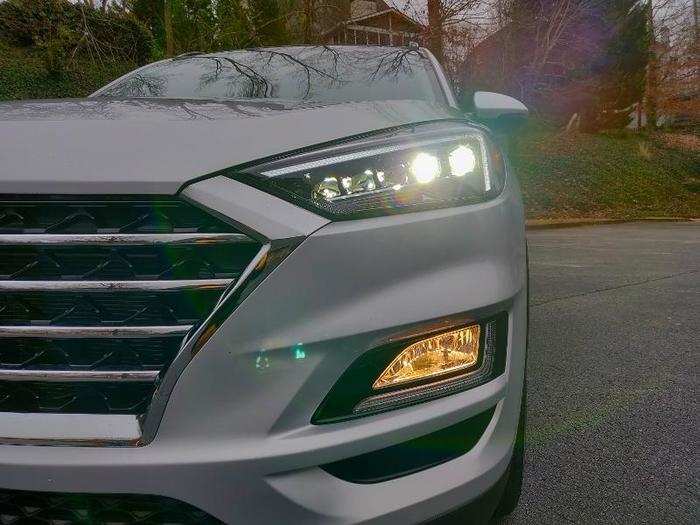
At 176.2 inches long, the Tucson's overall length remains unchanged.
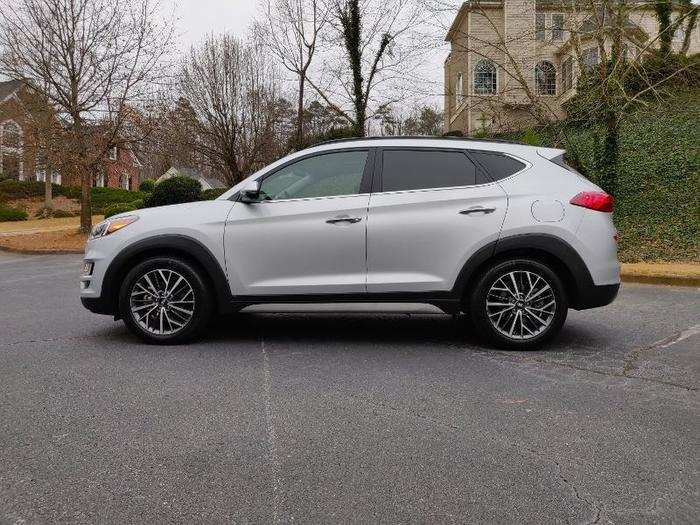
At the same time, the rear end mildly refreshed with new taillights and a slightly modified bumper.
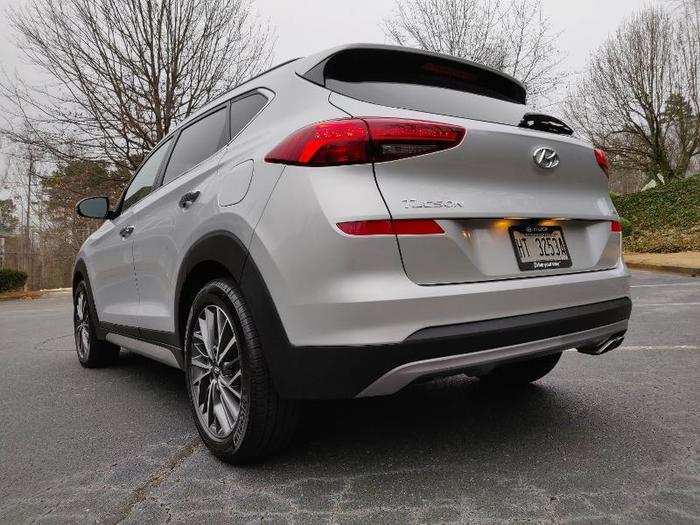
I'm a fan of these snazzy 18-inch wheels.
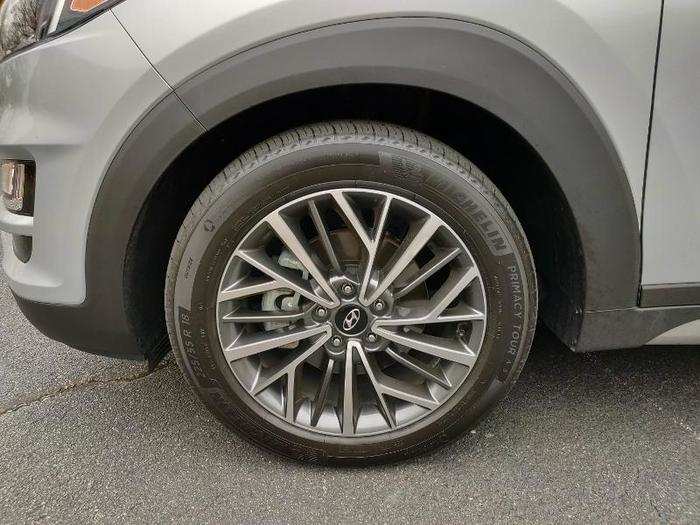
Overall, the revised styling feels stylish and understated.

Inside is where you'll see the biggest changes. The front dash and center stack has been redesigned. It brings the Tucson in line with the current Hyundai corporate looks found in the Kona and the Santa Fe.
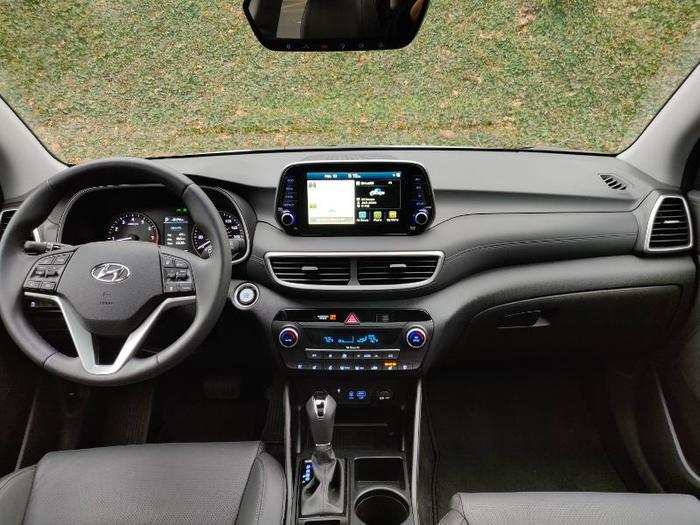
This is the Tucson's pre-facelift interior.

Overall, we were impressed by the Tucson's interior. Material quality is, for the most part, solid. Although a few of the plastic trim pieces felt a bit too cheap for a $34,000 car.
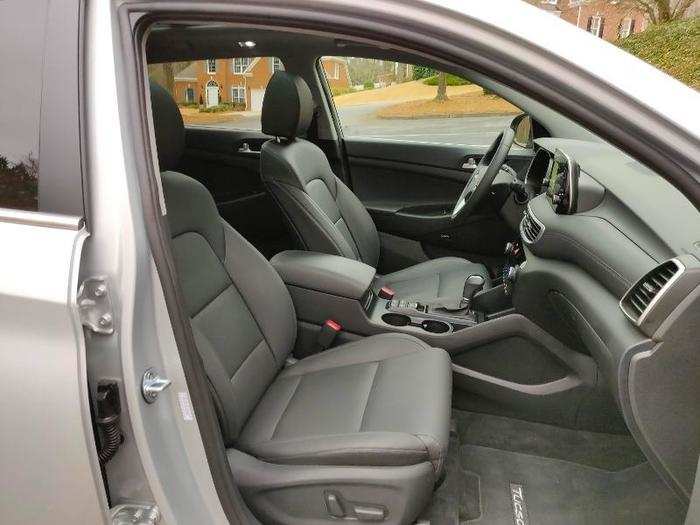
Hyundai nailed it in terms of cabin ergonomics. All the buttons are clearly labeled while all of the important features are intuitively place and within arm's reach for the driver.
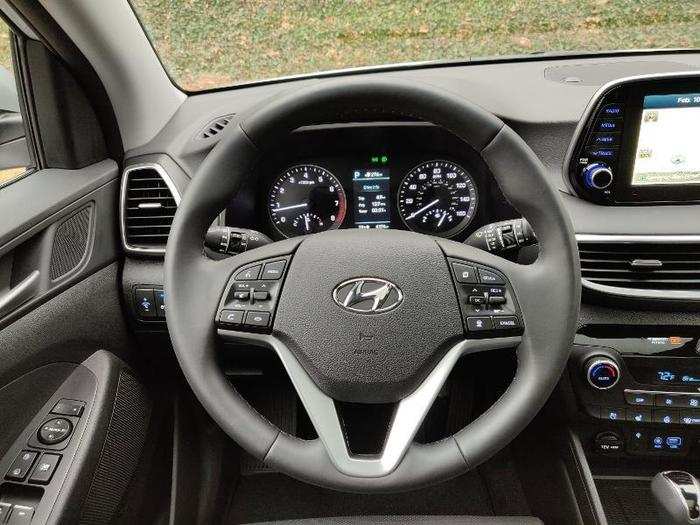
All the buttons are clearly labeled while all of the important features are intuitively place and within arm's reach for the driver.
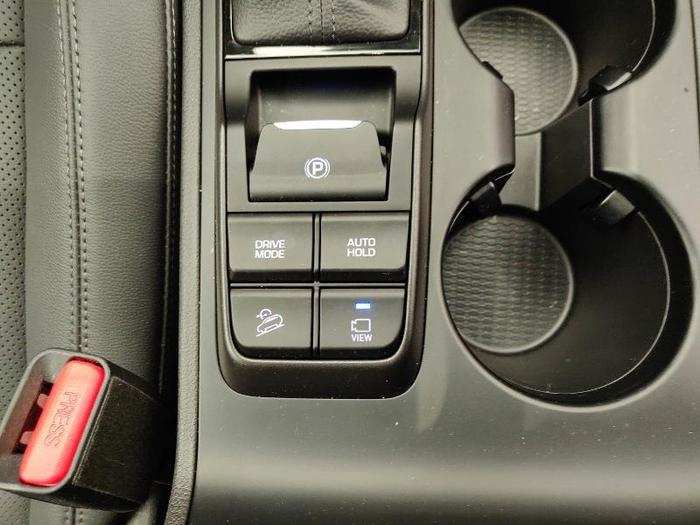
Ultimate trim cars come with a massive panoramic glass roof.
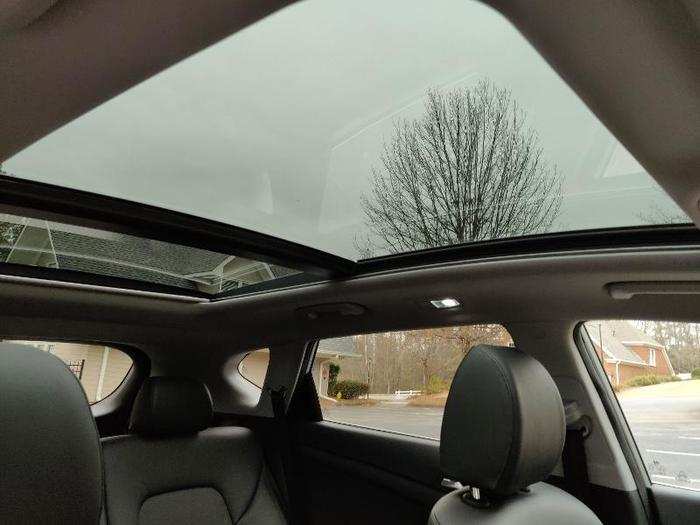
In front of the driver is a 4.3-inch color LCD information display flanked by a pair of clear and concise analog gauges.
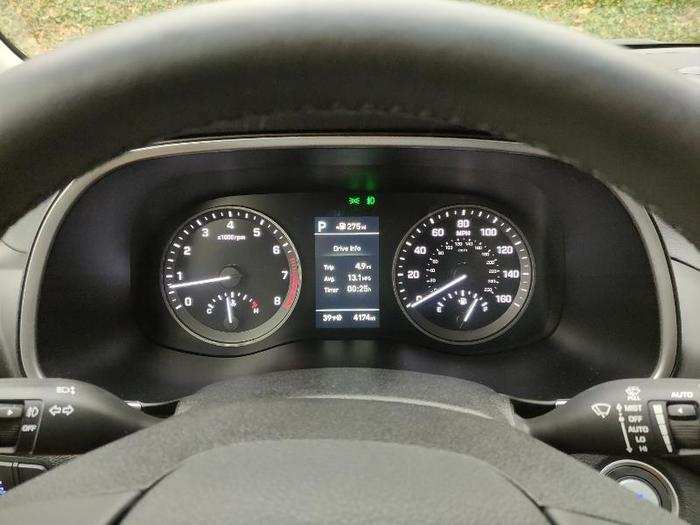
The redesigned center stack is dominated by an eight-inch touchscreen running Hyundai's corporate infotainment system. Lower trim level cars get a seven-inch screen.
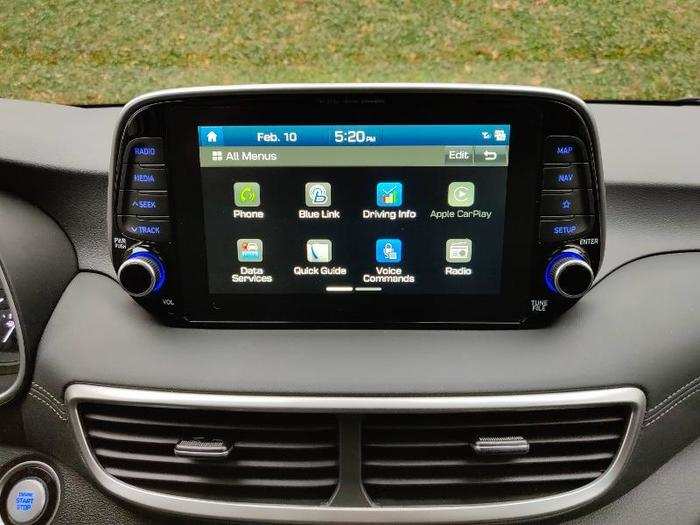
Hyundai's system is not the most sophisticated or beautifully rendered system on the market, but it's one of the easiest to use.
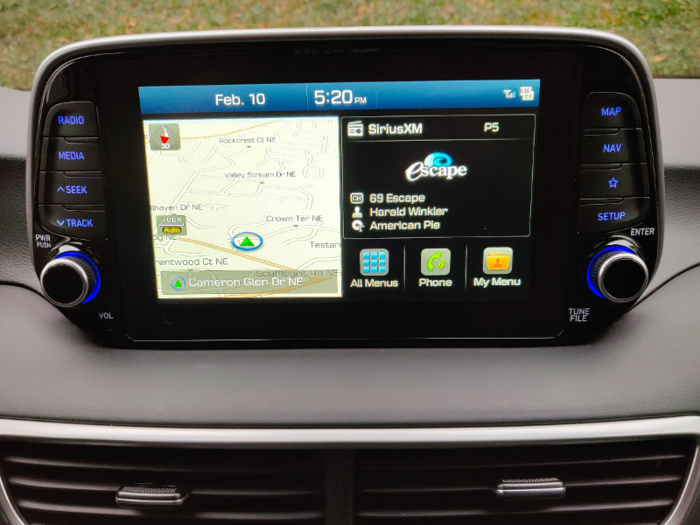
The menus are logically organized and the physical switches on the bezel of the screen work well as shortcuts for the on-screen features.
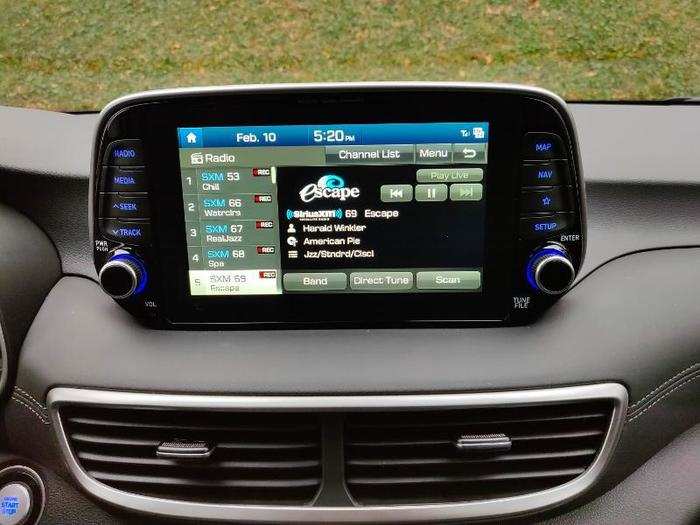
Our upscale system came with a built-in navigation system. It worked well enough.
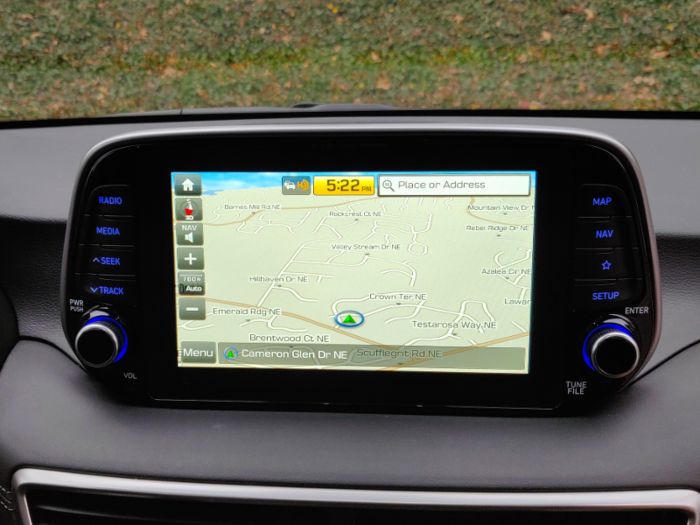
However, with Apple CarPlay and Android Auto standard on all trim levels, the usefulness of Hyundai's native navigation system is limited.
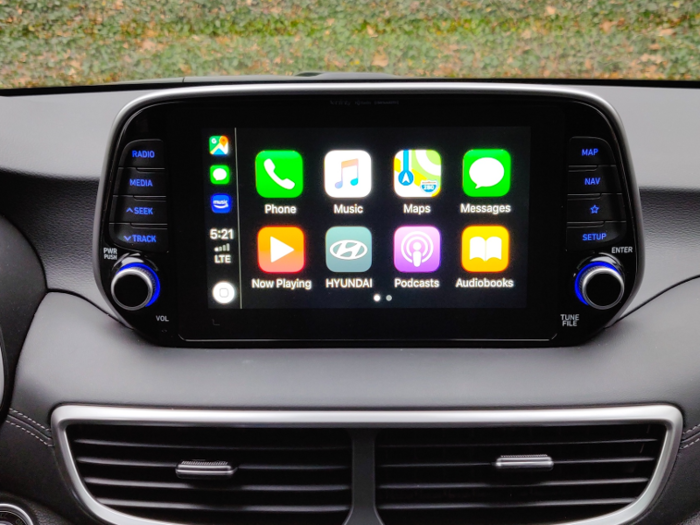
The screen is also home to the Tucson's elaborate camera system. There's a rear view camera along with...
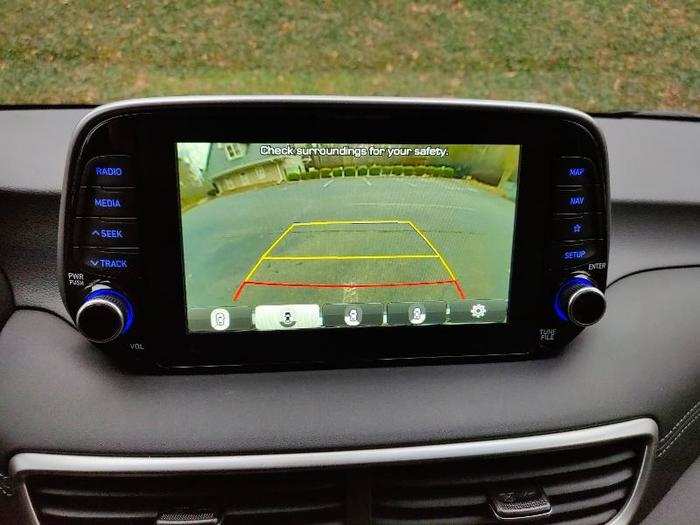
... a surround-view camera system.
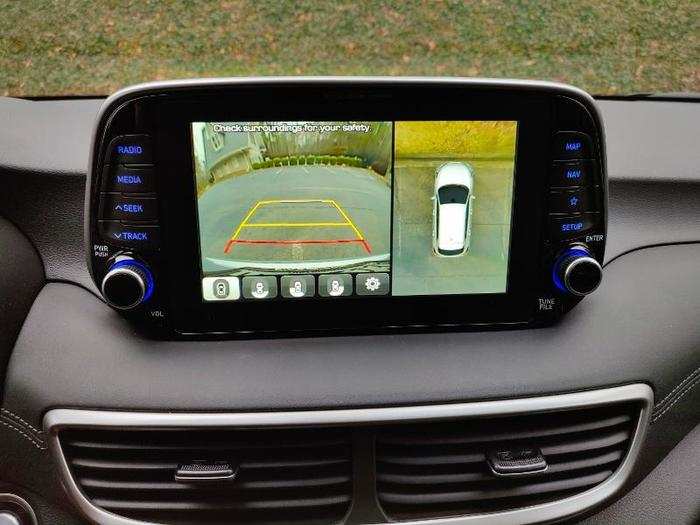
Our test car came with wireless charging and a handful of USB ports.
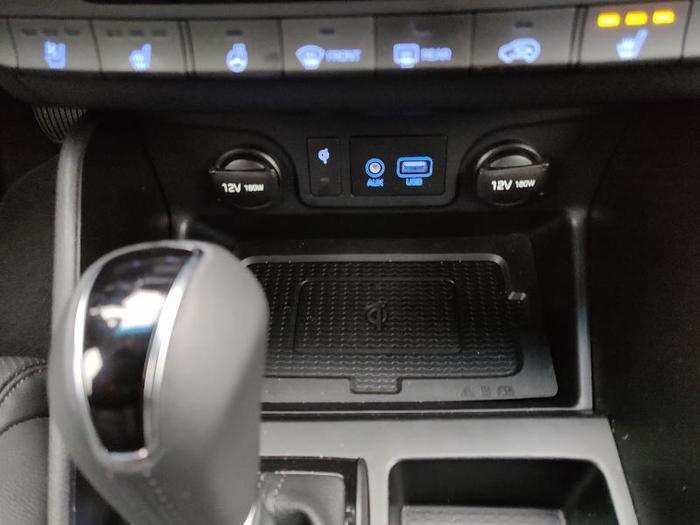
The Tucson's rear cabin offers plenty of room for two full-size adults.
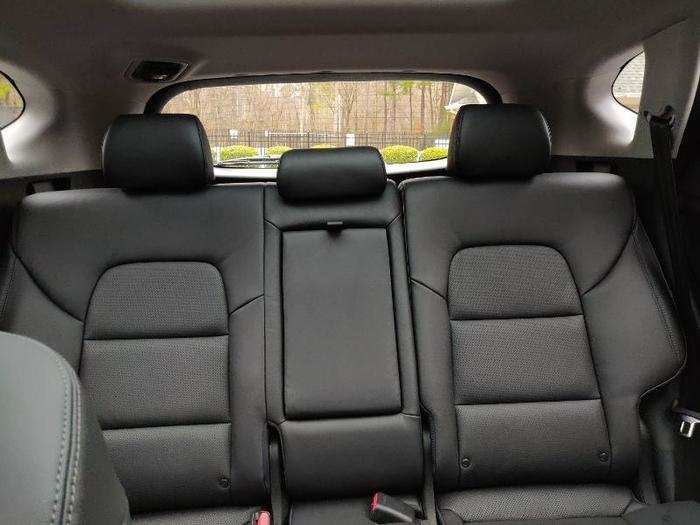
It's 38.2 inches of rear legroom feels ample but falls behind rivals like the Mazda CX-5 and Subaru Forester. Both of which offer more than 39 inches of legroom.
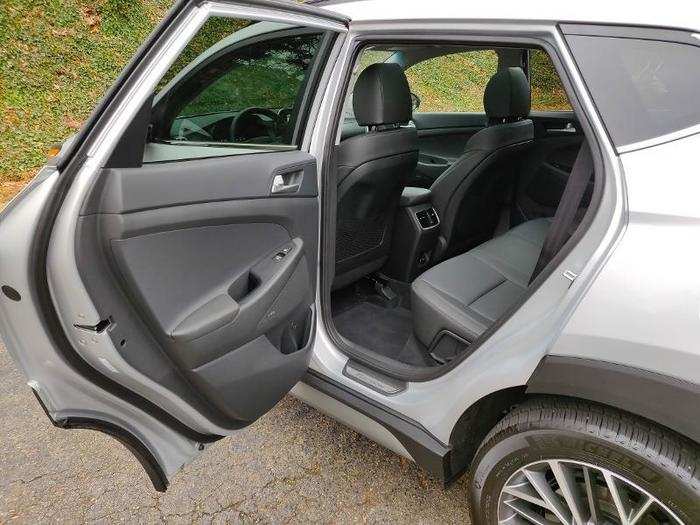
Open up the liftgate and...
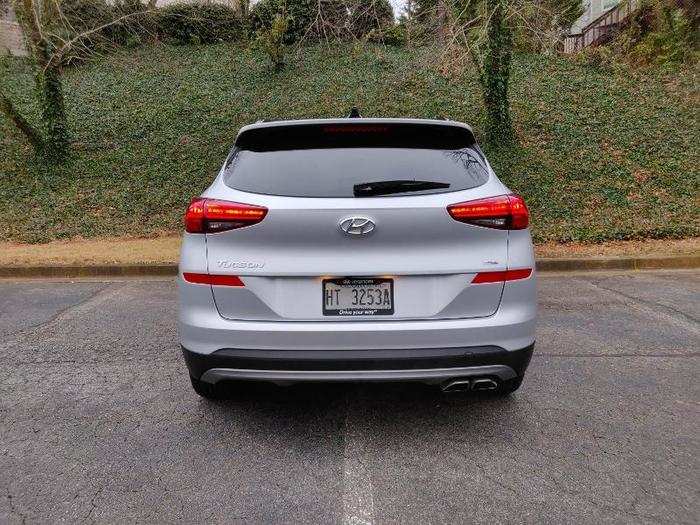
... there's 31 cubic feet of cargo room. Fold down the rear seats and capacity increases to 61.9 cubic feet.

Underneath the cargo floor is a small spare tire.
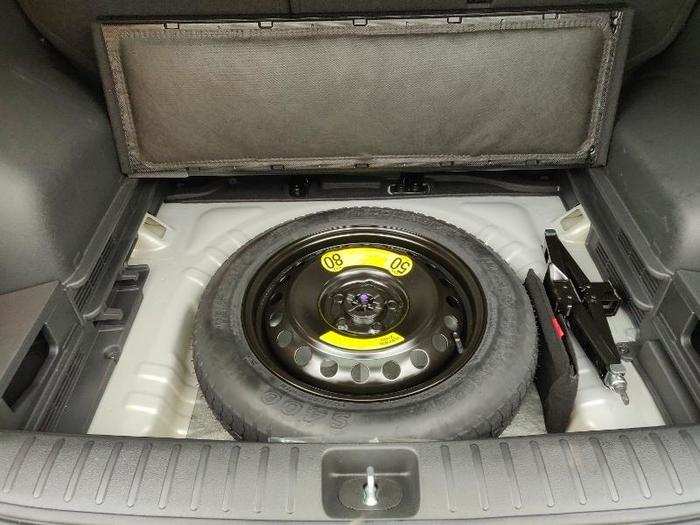
Under the hood, our Tucson Ultimate is powered by a 181 horsepower, 2.4-liter, naturally aspirated inline four-cylinder. The lower-trim levels are powered by a 161 hp, 2.0-liter, naturally aspirated four-cylinder. Last year's turbocharged 1.6-liter engine is no longer available.
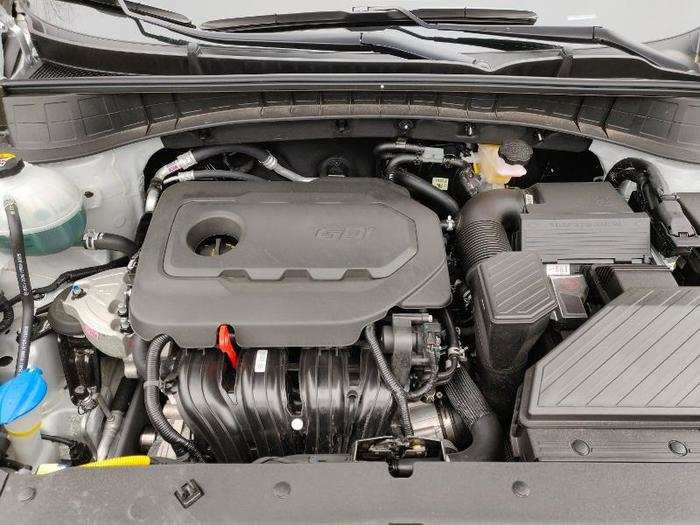
Both engine options are mated a six-speed automatic transmission sending power to the front wheels. Hyundai's HTRAC all-wheel-drive system is a $1,400 option.
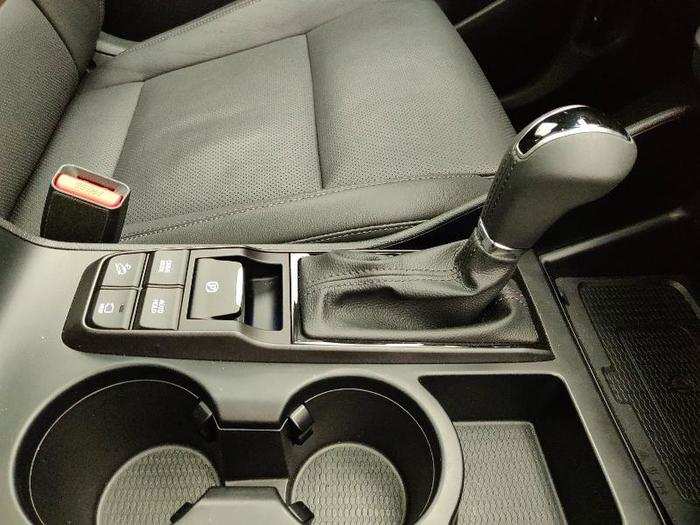
The Tucson is one of the few compact crossovers to come with a locking center differential that helps evenly distribute power offroad.
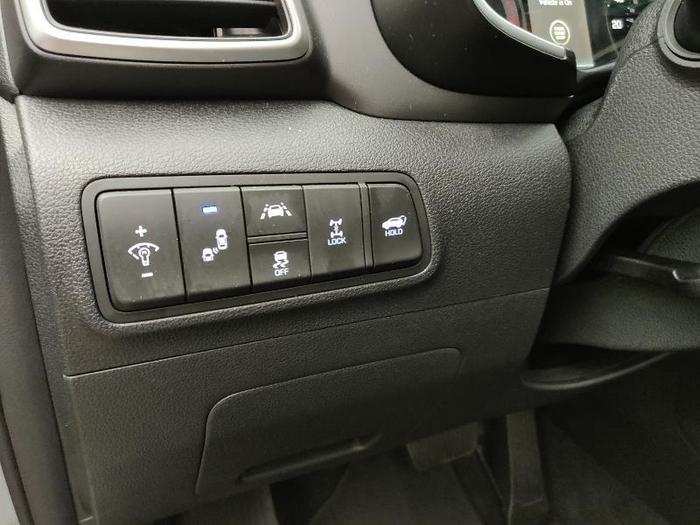
All Tucsons now come standard with forward-collision avoidance assist, lane-keep assist, and driver attention warning. Our tester came with optional features like adaptive cruise control, blind spot warning, and rear cross traffic warning,
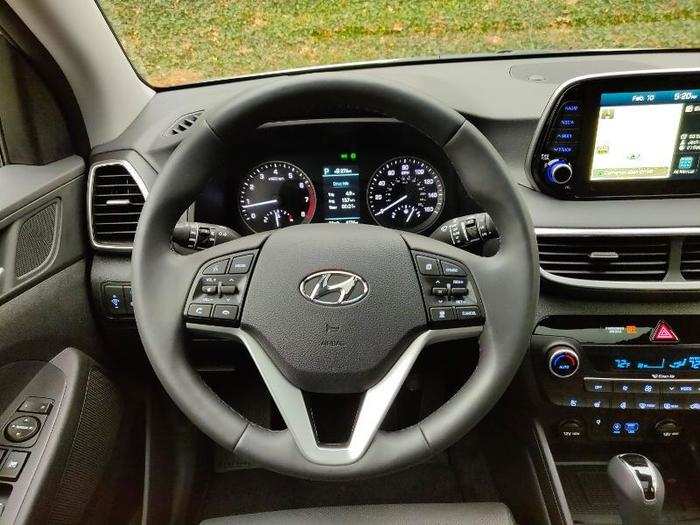
So, what's it like to drive?
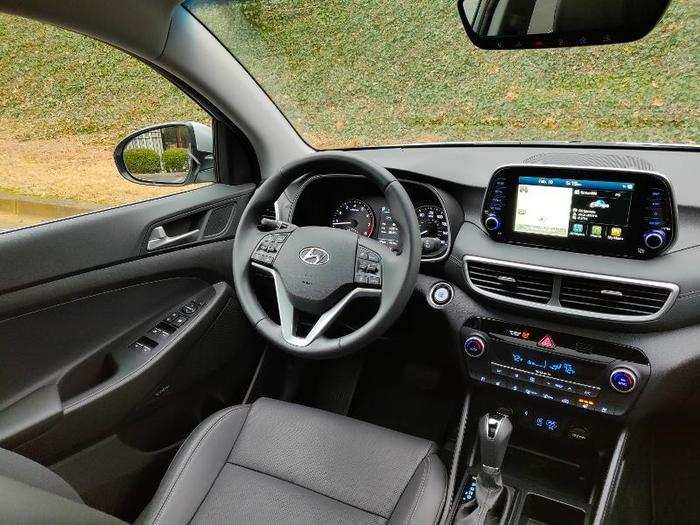
On the road, the 2019 Hyundai Tucson is solid, but far from spectacular.
Here's what we liked. We found the Tucson's chassis and suspension to be really well done. Around town and on the interstate, we found the ride to be soft and comfortable. In the corners, our 3,700-pound test car felt confident and composed.
Here's where it fell short in our opinion. The 181 horsepower, 2.4-liter naturally aspirated four-cylinder, is a solid engine and the six-speed is geared to deliver responsive low-end acceleration. However, 2.4 lacks the low-end torque of the outgoing 175 hp, 1.6 turbo engine. At the same time, the transmission tries to spend as much time as possible in the overdrive gear to save fuel. The result is a decided lack of passing power for the driver, especially at high speeds. There were a few times, while cruising on the highway, where I'd floor the gas pedal to change lanes and the Tucson simply couldn't muster up enough grunt to make the pass happen.
According to Motor Trend, the 2.4 is 0.5 seconds to 0.9 seconds slower to 60 mph than the discontinued turbo-powered Tucson.
The 1.6 turbo is still available as an option on the subcompact Hyundai Kona, a vehicle we thoroughly enjoyed.
Finally, there's the fuel economy. According to the US Environmental Protection Agency, our all-wheel-drive test car should deliver 21 mpg of fuel economy in city driving, 26 mpg on the highway, and 23 mpg in combined driving. However, we struggled to top 20 mpg in mixed highway and city driving.
The verdict.
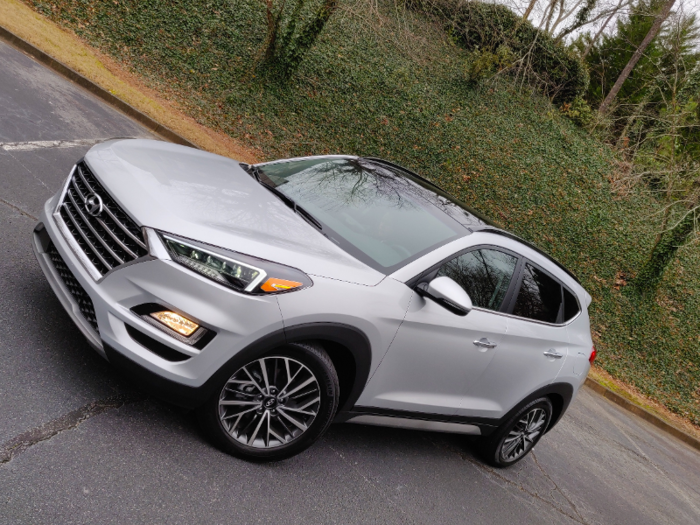
The 2019 Hyundai Tucson looks fantastic, handles well, delivers a comfortable ride, boasts a really well-designed cabin, and is packed with tech. However, its lackluster fuel economy and underwhelming powertrain hold it back from becoming one of the segment's elite offerings.
Overall, it's a very good compact crossover SUV. Unfortunately, it competes in a segment packed with a slew of other very good crossovers and even one or two that are near perfect.
As a result, the Tucson runs the risk of getting lost in the fray. But, if Hyundai is willing to discount, you could end up with one heck of a good deal.
Popular Right Now
Popular Keywords
Advertisement